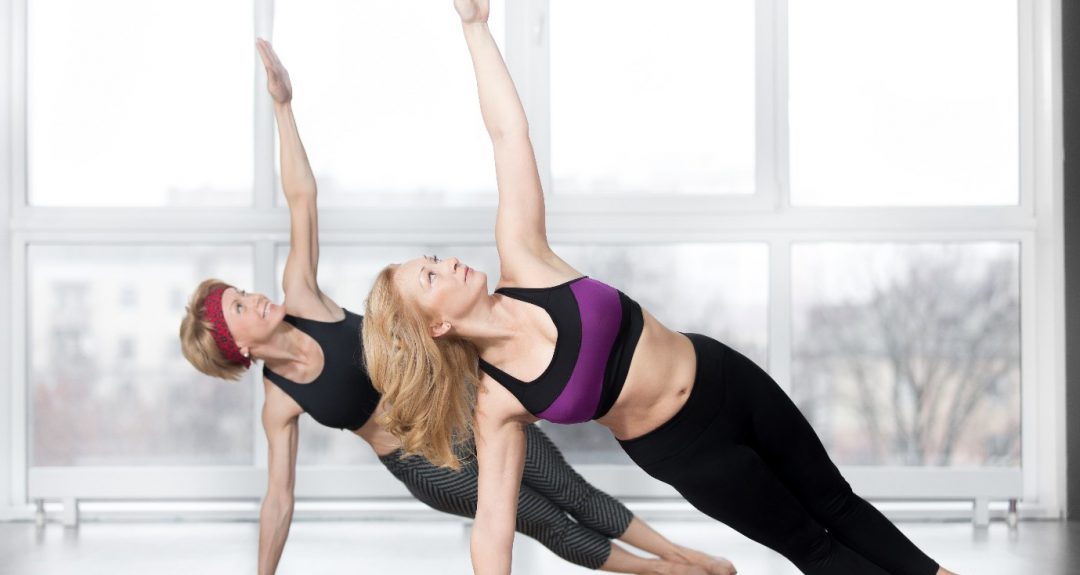The menopause can hold a lot of questions for women. Improving your health during the menopause is at the top of most women’s wish lists. Exercise is a popular way to improve your physical and emotional wellbeing but as your body experiences the changes that come with menopause you may be unsure what is safe and effective for you. Here are some tips to help you get the most out of your exercise to achieve your goals and why Pilates is so valuable throughout the menopause.
Exercise holds many benefits for our bodies and each life stage requires a slightly different investment. Two significant health risk factors for women going through the menopause is our long-term health risk to our cardiovascular (heart health) and bone strength. Maintaining physical activity not only helps address but also protect against these conditions. We don’t often think decades ahead in our life, but these are powerful investments for the years beyond the Menopause. It’s important to note that menopause isn’t the cause of cardiovascular disease but often the lifestyle changes that commonly occur in this period of life that increase your risk (1) and the possible changes to the muscles of the heart and blood vessels from a change in the hormonal levels particularly oestrogen. Cardiovascular activities can be tricky during the menopause if you are experiencing vasomotor symptoms such as hot flushes. This should not put you off exercising though as 30 minutes of exercise most days of the week can improve your health risks (2). You may be able to adapt your current exercise to minimise the impact with the following ideas:
– Wearing cooling clothes rather than overly covering up.
– Consuming drinks such as cooled water or mint tea rather than sugar or caffeinated drinks.
– Trying outdoor exercise opposed to the gym.
– Interval training- short tolerable bursts of increasing your heart rate.
– Vary your exercise plan and include conditioning exercise like Pilates to give variety to your cardio exercise plan.
In the 5 years after menopause a woman can lose up to 20% of their bone density (3). Whilst you can invest in your bone density with enhancing your nutrition possibly including supplementation, avoiding alcohol and smoking (4). Load bearing exercise leads to the stimulation of the body to lay down done tissue and you should aim for 150 minutes per week with at least two session of resistance exercise (5). Wrist, hip and vertebra fractures are the most prevalent fractures and a scan of your bone health will focus on the bone quality in these areas to indicate your overall bone health (5). Pilates is a great form of exercise for bone loading due to the positions used and the action of muscles. We often don’t use our upper body sufficiently so a four-point kneeling series on the mat will help you safely and effectively load your wrist bones. You won’t feel your bones working but ensuring your using a good posture of your spine and shoulders can help load your wrist joints even more effectively. These APPI Pilates exercises will also develop shoulder strength and aid the posture of the neck.
Pilates is excellent for developing posture control and balance, an important aspect of maintaining physical activity. Our standing series help to improve spinal and hip loading, again an under looked aspect of long-term health. You may have noticed your muscle bulk and tone change which can be frustrating when you feel you have continued your exercise as normal. Imagine your body in zones. Your tummy and trunk are the centre. They contain your deep stabilising centre. They are your foundations and from the centre of your body a sequence of movement flows. Creating control here first determines the quality of your movement in the zones further down your limbs. Your body relies on the joints, the muscles and nerves coordinating and balancing with each other (6). Harmonise the interaction of these and to the activity you want to do results in optimal movement. Softening of the muscles through hormonal changes not only means less strength but also less control over your movement. Pilates builds the inner zone, your ‘core’, to coordinate with the control at the joints and through-out your body. Being in the menopause does not mean you can’t build muscle but changes the body’s ability to build and sustain muscle bulk. The APPI method is clinically proven and evidence based to ensure you move safely and make the most out of your training.
You may have noticed episodes of dryness or irritation of the skin in or around the vagina. As your hormonal transition occurs this influences the fluid production and tissue quality of the pelvic floor and the vagina itself. The potential reduced tone altered digestive patterns and increase sensitivity- particularly dryness, collectively create discomfort. As with all sporting activities I would advise cotton underwear, avoiding a central seam in the gusset and the use of a vaginal moisturiser before you exercise. The benefit of Pilates is that is low impact thus producing a lower load into your pelvic floor and pelvic organs. The APPI method of coordinating your pelvic floor will not only counteract these symptoms through increasing the support to the pelvic organs but also increasing blood supply thus nourishing the tissues. The APPI method is a modified Pilates designed for a rehabilitation setting, making it flexible to adapt to your body’s needs.
The needs of your body may continue to change, and it could be of benefit to seek a 1:1 with your local APPI instructor or Pelvic Health Physiotherapist. They will be best placed to advise you on what exercises are best for you and how to improve your overall wellbeing.
References
1) https://www.heart.org/en/health-topics/consumer-healthcare/what-is-cardiovascular-disease/menopause-and-heart-disease
2) http://www.menopause.org/for-women/menopauseflashes/bone-health-and-heart-health/keeping-your-heart-healthy-at-menopause
3) https://www.nhs.uk/live-well/healthy-body/menopause-and-your-bone-health/
4) https://www.nof.org/preventing-fractures/general-facts/what-women-need-to-know/
5) https://www.nhs.uk/conditions/osteoporosis/
6) Panjabi, MM. The stabilizing system of the spine. Part II. Neutral zone and instability hypothesis. Journal of Spinal Disorders. 1992, 5:390-396

